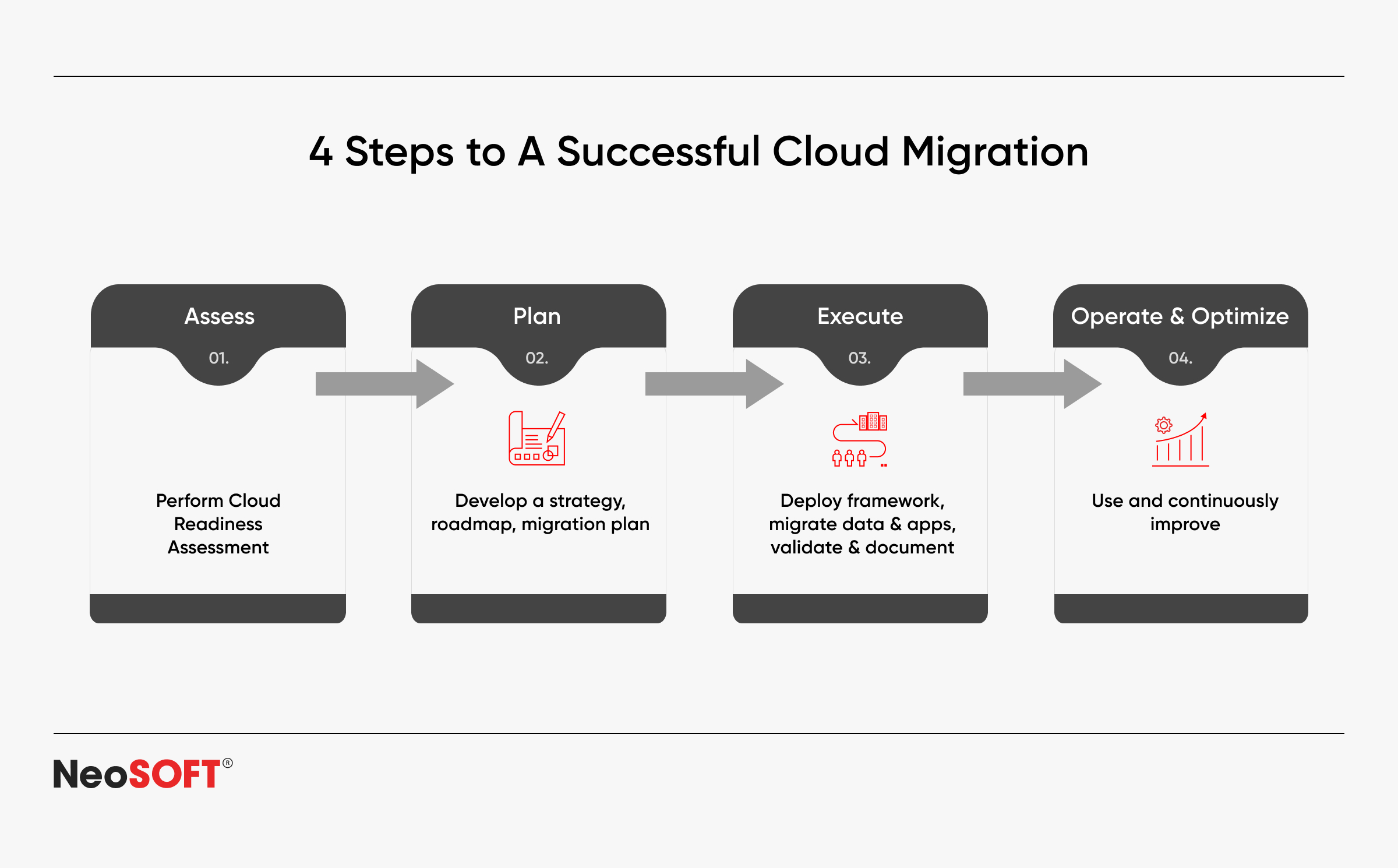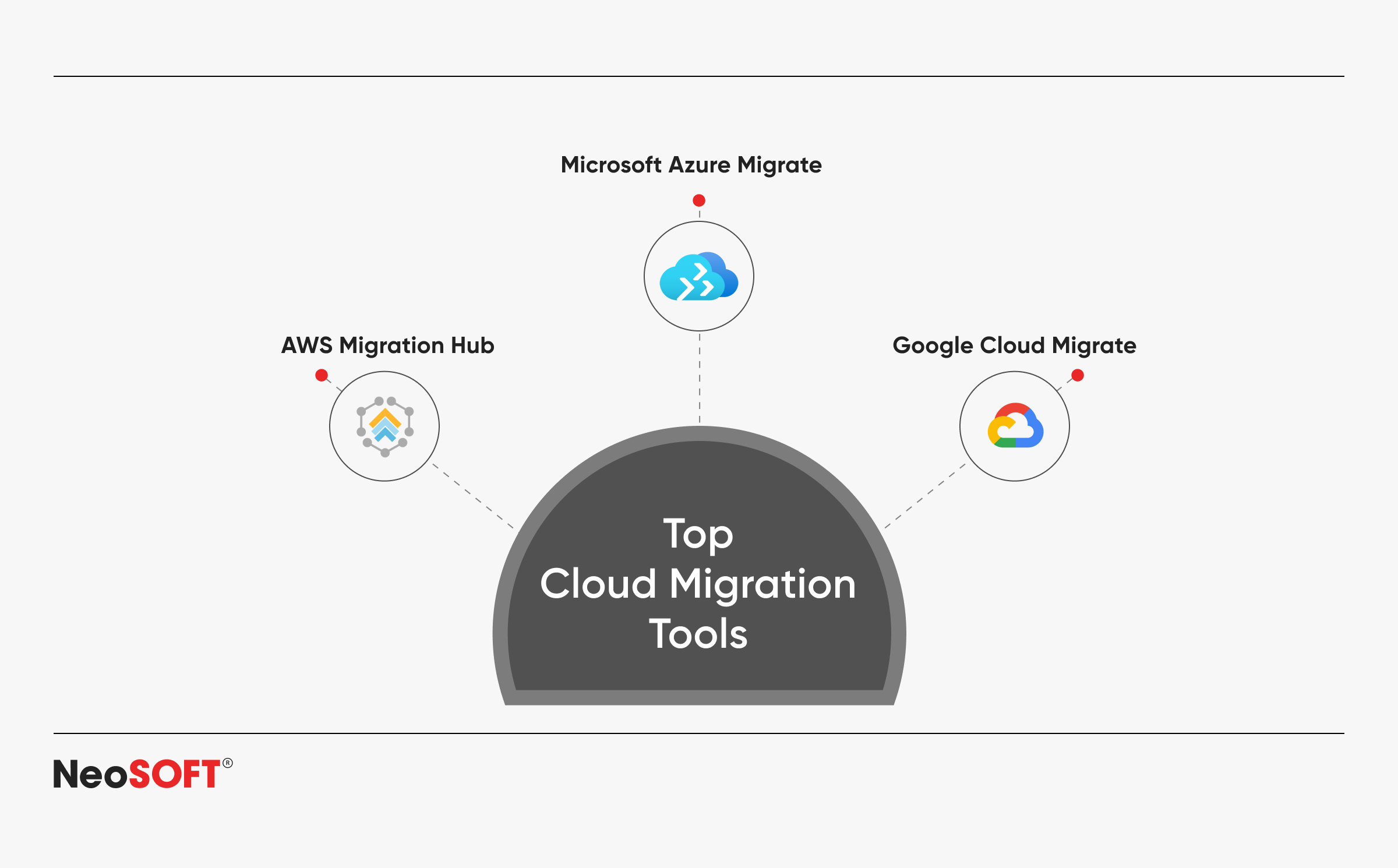Sky’s the Limit: Overcoming Cloud Migration Challenges
October 28, 2024
Introduction
Cloud migration has become an important component of contemporary business strategy in a time when innovation and agility are what determine success. Adapting to the cloud presents an effective solution to dated infrastructure, restricted scalability, and high operating expenses for businesses who are trying to keep up with the fast pace at which technology is progressing.
Businesses can achieve increased efficiency, decreased IT limitations, lower costs, and new opportunities for growth by migrating their data, programs, and workloads to cloud environments. Migrating to the cloud is about leading digital change and staying ahead of the competition, not just keeping up.
To begin with, migrating data and workloads to the cloud facilitates legacy modernization, enabling businesses to transition from antiquated systems to cutting-edge technology like machine intelligence. Second, cloud solutions frequently function on a pay-as-you-go basis, lowering capital costs and enhancing IT budget control.
Finally, the cloud provides unparalleled scalability, with nearly limitless processing power and ample storage space. This flexibility enables firms to adjust resources in response to changing workloads and adapt quickly to market requirements, making cloud technology vital to retaining competitiveness and business value.
This blog will look at the most common challenges encountered in the cloud migration process and propose practical solutions for tackling them. This blog, aimed largely at IT decision-makers, company executives, and technology experts, will provide companies of every kind with the insights required to efficiently manage the complexity of cloud migration and maximize its advantages for technological transformation and growth.
Cloud Migration Demystified
Cloud migration refers to the procedure of moving workloads, data, and apps from on-premises or other cloud environments to a cloud-based architecture. Depending on the particular requirements of a business, a cloud migration strategy includes tasks like database transfers, program rehosting, and data migration. Meticulous planning and execution are needed to ensure a seamless transition that doesn’t disrupt business-critical workloads.
Greater scalability, which renders it simpler for businesses to adapt resources based on consumption, and flexibility, which allows them to swiftly adapt to changing demands, are just some of the benefits of cloud migration. With a pay-as-you-go model, cloud migration also provides cost-efficiency by lowering capital costs related to physical hardware.
In the end, moving data over to the cloud is a calculated decision for businesses hoping to boost technological expertise, increase operational effectiveness, and set themselves up for further growth in the digital age.
Types of Cloud Migrations
- Lift-and-Shift: With this strategy, data and apps are moved to the cloud with little modifications. It often requires lower initial investment in rewriting the apps and is the fastest migration method.
- Re-platforming: In this strategy, minor changes are made to enhance apps for the cloud platform. This could entail modifying some aspects of the program to increase performance without totally rebuilding it.
- Refactoring: This requires rewriting apps to fully utilize cloud capabilities. Refactoring improves scalability and performance by allowing businesses to fully utilize cloud-native features and services.
For companies looking to stay competitive in the current digital environment, cloud migration is essential. Given their affordability, cloud solutions can save a lot of money, and because cloud-based platforms are flexible, businesses can scale their resources up or down as required. Employing cloud migration services can help businesses develop faster and better responses to changing market demands.
Common Cloud Migration Challenges
Lack of Planning
Poor planning is one of the more frequent mistakes made while migrating to the various cloud platforms. Uncertainty, delays, and cost overruns may result from organizations rushing into the process without well-defined goals or strategies. Unstructured approaches might lead to missed opportunities and inefficient resource allocation.
Solution: To minimize these problems, companies should do extensive readiness assessments that examine their existing applications and present IT atmosphere, identify potential hurdles, and establish clear application migration goals. Designing comprehensive process maps that outline each step can help ensure all parties involved in application migration are in agreement, deadlines are fulfilled, and resources are distributed efficiently.
Data Protection & Compliance
Cloud applications and data migration raises significant security and legal compliance concerns. In addition to making sure they comply with industry rules like GDPR and HIPAA, which can be complicated and vary by location, organizations must safeguard massive amounts of sensitive applications and data from potential breaches.
Solution: Putting strong security measures in place is crucial. To safeguard data while it’s in transit and at rest, organizations should use Identity and Access Management (IAM) solutions to manage user access, encrypt data, and collaborate with licensed cloud service providers who are aware of and abide by applicable laws. Vulnerabilities can also be found and compliance maintained during the migration process with the use of routine security inspections and risk evaluations by cloud security services.
Legacy Applications Compatibility
When moving to cloud environments, older applications can cause compatibility problems. These previous versions might not be built to function in the cloud, which could result in a loss of functionality or a decline in performance.
Solution: Organizations should do a comprehensive dependency analysis to comprehend the ways in which legacy systems connect with other apps and services in order to tackle this difficulty. Choosing hybrid cloud services, which maintain important legacy systems in on-premises environments while utilizing cloud resources, is one migration strategy. Additionally, containerization can facilitate a more seamless and successful migration, by allowing legacy apps to operate in a cloud-friendly environment.
Downtime and Continuity Risks
Operational disruptions brought on the cloud migration may have a detrimental effect on customer support and general business continuity. During the transition phase of cloud journey, downtime may lead to lost income and reputational harm.
Solution: To lower the risk of major downtime, organizations should implement staggered migration solutions that enable them to move data and apps in phases. It is important to make sure that crucial business operations continue throughout the migration process by putting in place strong disaster recovery planning, which includes backup operating systems, data centers and failover techniques. During these shifts, maintaining regular contact with customers and stakeholders will additionally manage expectations.
Cost Management
When migrating data to the cloud, unforeseen expenditures can mount up quickly, particularly if assets are mismanaged or if the organization overlooks hidden charges like data transfer fees and extra cloud services.
Solution: Throughout the migration processes, organizations should use cost management tools to track and evaluate their expenditures while managing resources. Since auto-scaling capabilities automatically modify capacities based on demand, they can assist optimize resource utilization and control expenses. Organizations can stay on course and spot possible overspending early with regular expense assessments and budgeting strategies.
Skill Gaps
Many companies have a shortage of IT staff members with the requisite knowledge of cloud computing to successfully handle the challenges of a migration project. This may result in a higher chance of errors and inefficiencies during the migration procedure.
Solution: Investing in training courses to upskill current employees in cloud computing technologies and migration tactics can help firms close these skill gaps. The skills required to direct the move might be obtained by hiring cloud architects or specialist consultants. By reducing the workload for internal teams, managed services providers can also facilitate a more seamless transition to the cloud.
Post-Migration Optimization
Organizations may encounter latency, poor performance, or wasteful allocation of resources in the new cloud infrastructure following the transfer. If these problems are not resolved, cloud adoption may not yield the expected benefits.
Solution: To track resource usage and application performance in real time, organizations should use cloud performance monitoring solutions. By effectively distributing workloads among servers, load balancing can improve responsiveness. To help businesses get the most out of their cloud investment, the cloud environment needs to be regularly reviewed and adjusted with scaling solutions for continued optimal performance.
Top Tools for Cloud Migration
The proper tools and technologies are essential for a successful cloud migration strategy in order to guarantee smooth transitions and expedite the process. Here are a few of the most popular cloud migration platforms and solutions.
Cloud Providers
Well-known cloud service providers Amazon Web Services (AWS), Google Cloud Platform, and Microsoft Azure each provide a full toolkit to assist with every stage of the conversion effort.
By providing scalable infrastructure and services, these platforms make it easier to migrate and manage workloads and apps in the cloud.
Migration Tools
- AWS Migration Hub: The development of cloud migrations throughout AWS is monitored with the aid of this consolidated platform. To guarantee a seamless transition, it integrates with other AWS services and offers a uniform picture of the conversion process.
- Google Cloud Migrate: This utility makes it possible to move virtual machines (VMs) to Google Cloud from on-premise systems or other cloud environments. It simplifies everything and reduces the dangers involved in migrating virtual machines.
- Microsoft Azure Migrate: This tool simplifies database, server, and application migrations and offers thorough insights into the current architecture. It was created with process evaluation and migration from on-premises to Microsoft Azure in mind.
Orchestration and Containerization
- Docker: A popular containerization software that facilitates migrations between environments, such as from on-premises to cloud and cloud to cloud migration, it allows software and its dependencies to be packaged into containers, leading to improved performance.
- Kubernetes: One of the top orchestration tools, Kubernetes may be used to manage, launch, and scale cloud-based containerized applications. Complex cloud-native apps benefit greatly from its ability to streamline and optimize cloud migration services.
These technologies and solutions enable businesses to effectively manage the difficulties of cloud migration and utilize all of the benefits of cloud computing with minimal disruption.
What’s on the Cloud Migration Horizon?
The way businesses use and move to the cloud is being influenced by emerging trends and technological advancements, which will have significant consequences on cloud migration moving forward.
Trends Shaping Cloud Transformation
- AI-driven Automation: Artificial intelligence and machine learning (AI/ML) are becoming increasingly important for cloud migration optimization. Systems with AI capabilities can automate tasks such as workload assessments, cost reduction, and security and compliance checks. This can improve and accelerate migrations while decreasing the possibility of human error.
- Serverless Architectures: With businesses shifting away from infrastructure management and physical servers, serverless computing is becoming more and more popular, as we outlined in one of our previous blogs. This architecture simplifies operations and enables automatic scalability in response to demand by enabling enterprises to execute applications and services with no fretting on the foundational infrastructure.
- Multi-Cloud Approaches: Businesses are increasingly using multi-cloud strategies as a way to increase flexibility and prevent vendor lock-in. This approach increases resilience by combining many cloud providers, enabling companies to make use of the strongest features and services of each cloud provider, as we discussed in another of our previous posts.
Impact on Cloud Services
- Enhanced Flexibility: Cloud services and strategies give businesses more flexibility, enabling them to select the best solutions that meet their unique requirements and quickly adjust to shifting business needs.
- Better Scalability: Businesses can expand with ease thanks to serverless builds, which eliminate the burden of managing infrastructure by allocating resources automatically as needed.
- Reduced Complexity: By automating repetitive operations and reducing the need for human intervention, AI-driven automation streamlines and eliminates mistakes during cloud migration, thereby decreasing its complexity.
Conclusion
Cloud migration is an essential component of contemporary business strategy, not just an advancement in technology. In order to obtain success in an increasingly digital environment, organizations are striving for increased flexibility, scalability, and cost-efficiency.
By understanding common cloud migration issues and implementing the appropriate tools and techniques to fix them, businesses may turn possible roadblocks into opportunities to promote greater digital transformation, creativity, and expansion.
All set to take the leap? Our team of professionals is available to help you at every stage, whether you’re searching to improve your existing infrastructure to achieve your desired business outcomes or are just starting your cloud migration journey. Get in touch with us at info@neosofttech.com to find out how our talented and dedicated teams can level up with our cloud migration services.




















